by Michael Morris
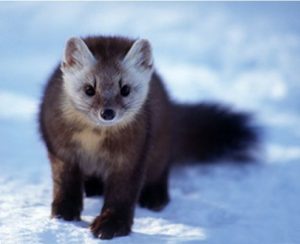
We share the Mount Macpherson trails with many other creatures. Keeping an eye on the snow, I almost always see tracks of snowshoe hare and marten. I often see tracks of coyote, moose, and squirrel. Tracks of wolverine and wolf are rare. Mink will travel along our creeks sometimes leaving a trail on snow patches between pools.
Shrew 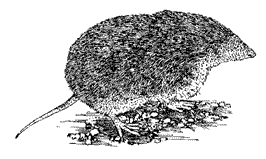
The smallest track maker is the shrew, the world’s smallest mammal. I would not be able to discern these tiny tracks other than when I get to watch them run along the trail or over my skis. Shrews are dark grey, about the size of a ping pong ball, with a pointy nose. They spend most of the winter under the snow eating insects, larvae, and seeds.
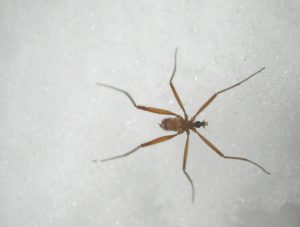
I often see insects on the snow. Most insects would freeze solid at temperatures below zero, but a few species of snow crane fly, caddis fly, and some spiders have the ability to make a glycol-based antifreeze, like that in your car’s radiator, to replace the water that would normally be found in their cells. However, minus four degrees Celsius is their limit. Before the temperature drops to minus four, the spiders return to beneath the snow pack via the openings created by trees. The insulating nature of snow keeps the temperatures at ground level close to zero.
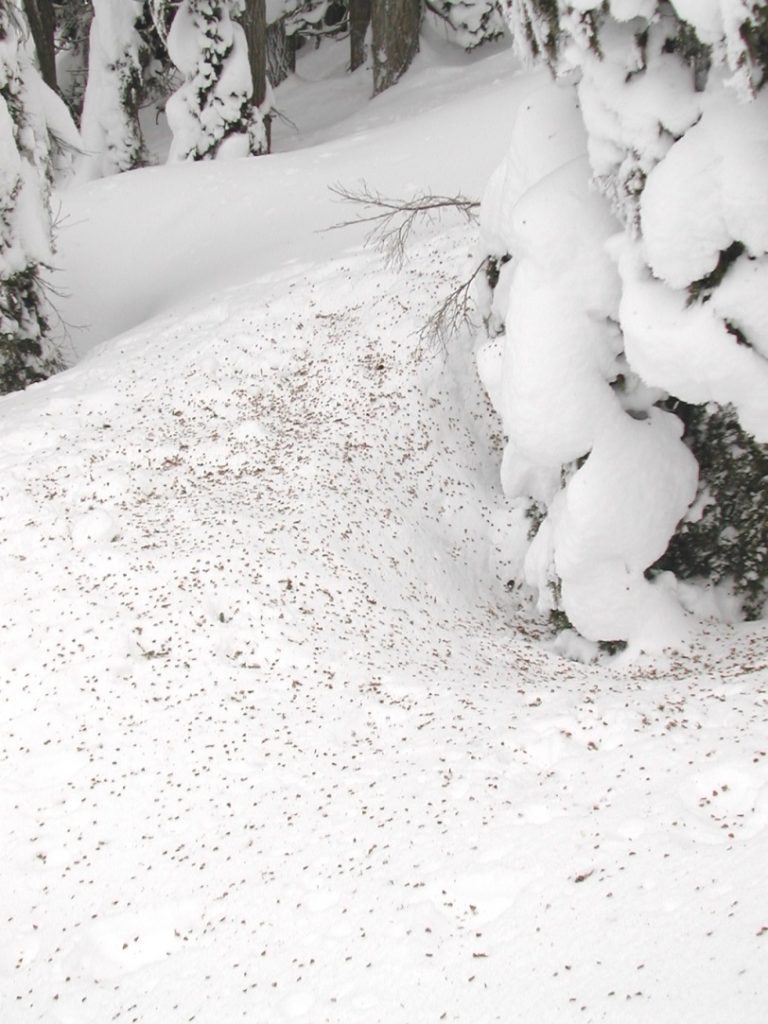
Some winters more than others, we are visited by flocks of tree-seed eating birds, mostly Pine Siskins and Red Crossbills. Different species of birds specialize on different species of trees based on the shape and size of their beaks. Found in northern forests around the world, crossbills are highly specialized foragers equipped with crossed mandibles adapted for extracting seeds from conifer cones. They travel in flocks that may suddenly appear in an area, breed, and then disappear as abruptly as they came. You can see evidence of their feeding on tree cones by the litter of tree seeds on the snow surface.

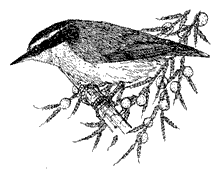
Not as numerous, but with us year-round, are the chickadees, nuthatches, and kinglets, which can be heard chirping in the higher branches. They can often be detected if you wait quietly. Ravens are not at all subtle, always on patrol looking to clean up something that winter, or winter drivers, have killed.
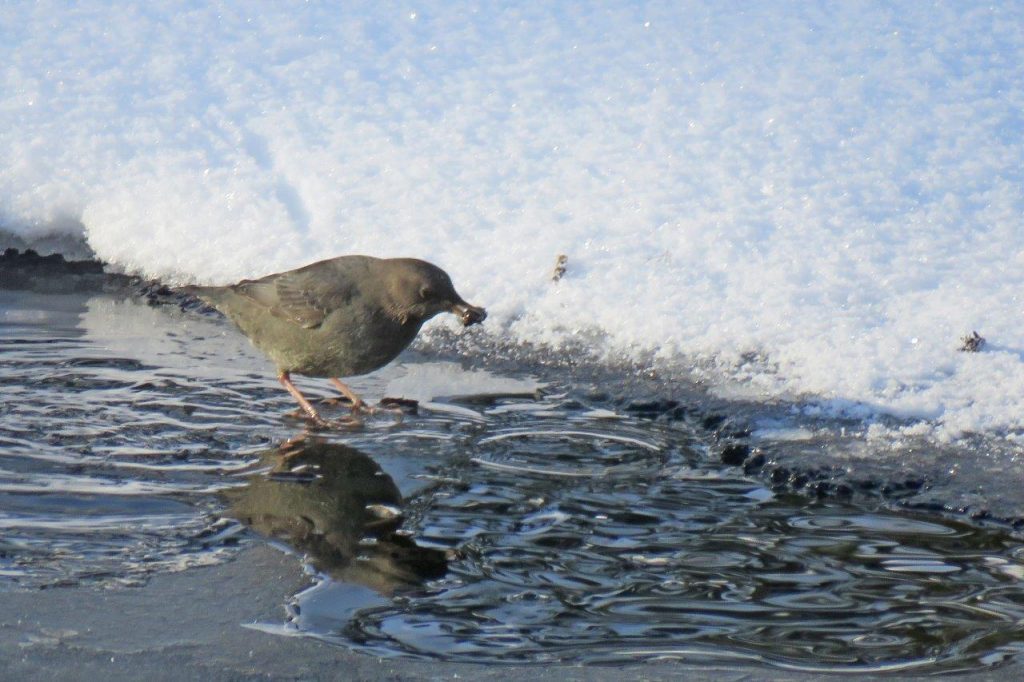
My favorite is seeing a dipper dive in to the water at the Main Loop pond when it is not quite frozen over. There we can often find this slate grey, fist-sized bird poised on the ice edge. Dippers get their name from their most conspicuous habit, a repetitive up-and-down bobbing motion, which is thought help them see prey from their position on a steam side rock. They feed by plunging into fast flowing streams seeking aquatic insects and fish eggs, the same diet as a trout.
Dippers have a distinctive “jik-jik” call note heard when they defend stretches of creek habitat from other dippers, or during close formation courtship flights. Less often heard is their lyrical song, seemingly an indicator their satisfaction after a successful feeding session. Stop for a look and listen when there is open water. As with most birds, they are tolerant of observers if you remain still. To improve your view, wait until they are underwater before moving closer.
